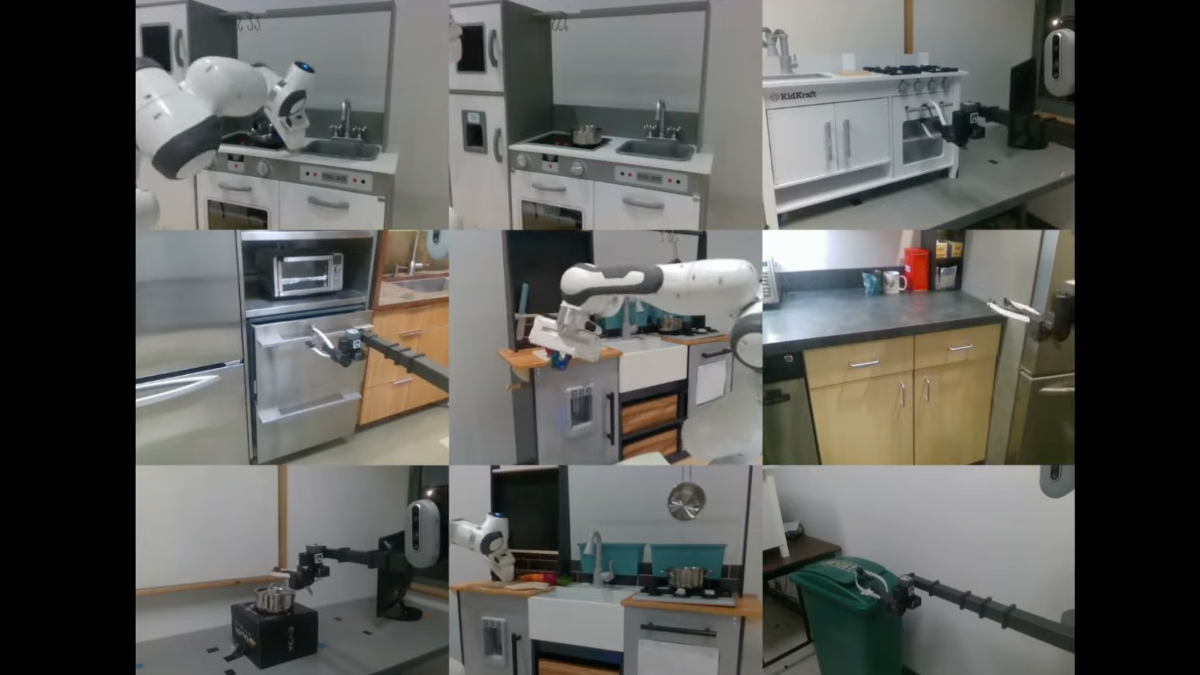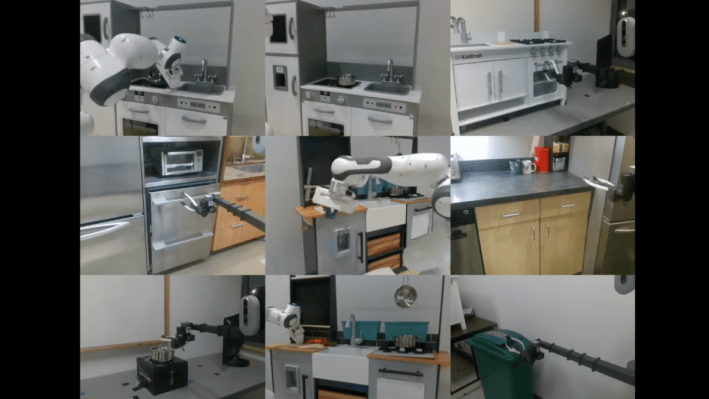
The week in robotics: Teaching robots chores from YouTube, robot dogs at the border and drone consolidation

AI’s grabbing headlines, but the robotics field is still making a significant impact in the real world — and this is your briefing on our latest coverage of the growing industry.
Before we get into the depths of the past week’s noteworthy robotics news, our resident expert Brian Heater dove into the debate over the use of robot dogs to patrol the border between the U.S. and Mexico.
As he notes in this week’s edition of his Actuator newsletter, which you can sign up for here, the robotics industry is stuck between a rock and a hard place on the potential use of their hardware for more violent purposes:
“I’ve discussed where I stand on the subject of weaponizing robots several times over the years in Actuator (not a fan), but I also understand how it can be a nuanced conversation for many. For those who sell weapon systems to the government, the argument largely centers on the notion that if we don’t get there first, someone else will.”
Drone inventory firm Gather AI buys competitor Ware
Inventory management is a challenge shared across numerous industries that becomes even more of a mess when the sheer volume of product to monitor expands to multiple warehouses at increasing sizes. That’s why it becomes a focal point for those looking to introduce automation into workflows.
One of the solutions gaining traction of late is the deployment of drones to manage inventory. By virtue of its deal with Ikea, Verity has become one of the most prominent players in the space. But they’re not alone, and the Pittsburgh-based Gather AI stepped up its competition by acquiring Ware, one of its biggest competitors.
The financials behind the acquisition have not been disclosed.
Dexory pulls in $19 million for automated inventory management
In more grounded warehouse news, Dexory, which uses autonomous robots to provide warehouses with real-time inventory management, announced a $19 million Series A led by Atomico. Its total funding now stands at $37.9 million.
“The robots can be deployed multiple times a day or once a day around their shift patterns, including overnight,” CEO Andrei Danescu told TechCrunch. “The collection of data insights over a short space of time, all the time, allows analysis for identifying issues on-the-spot and decision making in driving warehouse operational efficiencies.”
New funding pushes Realtime Robotics past a $54M raise
Realtime’s latest raise, of $9.5 million, comes hot on the heels of a $14.4 million raise in September, with the firm continuing what has been a lengthy Series A. They focus on one of the hottest spaces within robotics of late: helping manufacturers coordinate various systems running their operations that may come with their own proprietary system management software.
“This most recent funding will be used to speed roll out of our innovative products and services to global end users and line builders across the automotive and automated warehouse industries,” CEO Peter Howard told TechCrunch.
Robots with the capacity to learn from YouTube
A team at CMU Robotics has been showcasing a program that uses video content to teach robots how to perform various tasks. But now they no longer require the human they learn from to demonstrate a task within an identical setting.
“We are using these datasets in a new and different way,” PhD student Shikhar Bahl notes. “This work could enable robots to learn from the vast amount of internet and YouTube videos available.”
Want the latest in robotics news and additional commentary and insights? Subscribe to Actuator and get the weekly newsletter in your inbox.


